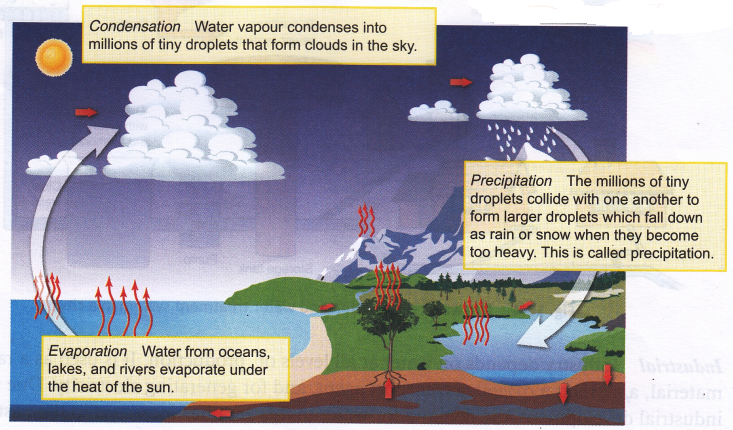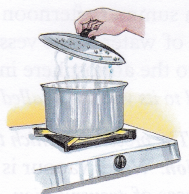What Are The Different Uses Of Water
The uses of water can be broadly divided into agricultural, domestic, and industrial uses. The major portion of water in India is used in agriculture, as India is mainly an agricultural country. Besides being essential for life, water is used for many other purposes. In India, about 70% of the total water available is used for agriculture, 20-22% by industries, and only 8% is used for personal or domestic needs. Let us learn more about the various uses of water.
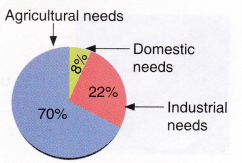
3 Major Uses of Water
Agricultural
Our country depends a lot on agriculture. Farmers rely on water to sustain their agricultural crops, e.g., wheat, paddy, etc. Many a times, rainfall is not sufficient to water these crops, and farmers have to use artificial watering systems, referred to as irrigation. Nearly 60% of the Indian population depends on agriculture for their living, and uses nearly 90% of all water for irrigation. Irrigation systems are necessary because the monsoons are unpredictable and in regions where cultivation completely depends on the rain, no rain can result in reduced yields or even total crop failure.
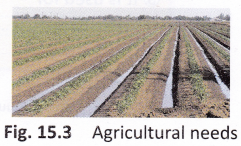 Domestic
Domestic
We need water to drink. Water that is suitable for drinking is called potable water. We also need water to bathe, wash clothes and dishes, clean our house, and to water plants. It also regulates the climate of a place and provides homes to many animals. Water required for household use is called domestic water. It is required for a variety of purposes such as drinking, preparing food, bathing, washing clothes and dishes, watering plants, etc. We generally get water in our homes in one of the following two ways. It is either delivered by the municipal water distribution system, or we extract it from an underground source through a motor-driven tube well. Apart from these uses, water is also used for transportation and recreation.
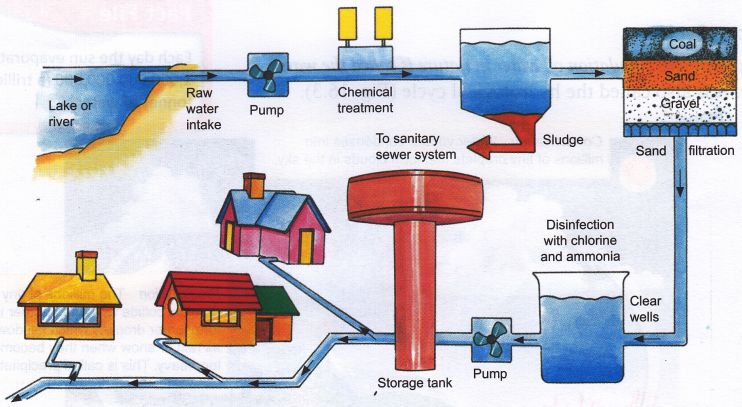
In cities, municipal water treatment plants supply homes with treated water that matches drinking water standards. In rural areas, however, over 80% of the domestic water comes from underground sources. In areas where water is scarce or where wells, ponds, and rivers dry up in summers, people have to travel long distances to fetch water for their daily needs.
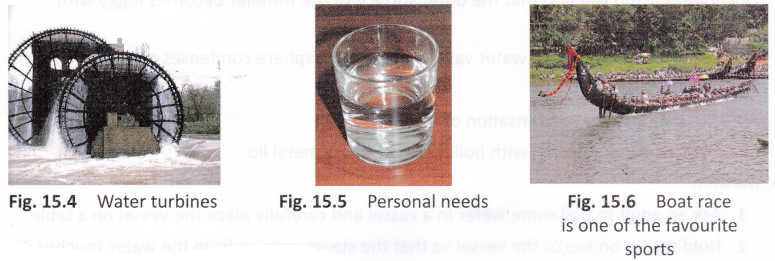
Industrial
Industry depends on water at all levels of production. It is used as a raw material, a solvent, a coolant, a transport agent, and for generating electricity. Due to rapid industrial development, the demand for water in this area has increased in the past several years. Industrial needs Factories use a large amount of water every day—as raw material, for cleaning, heating, cooling, generating electricity (e.g., water turbines), etc. The amount of required depends on the kind and size of the factory, and water.


